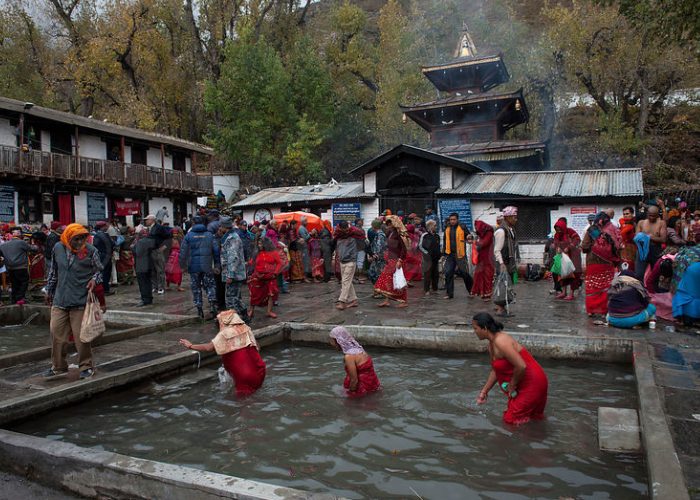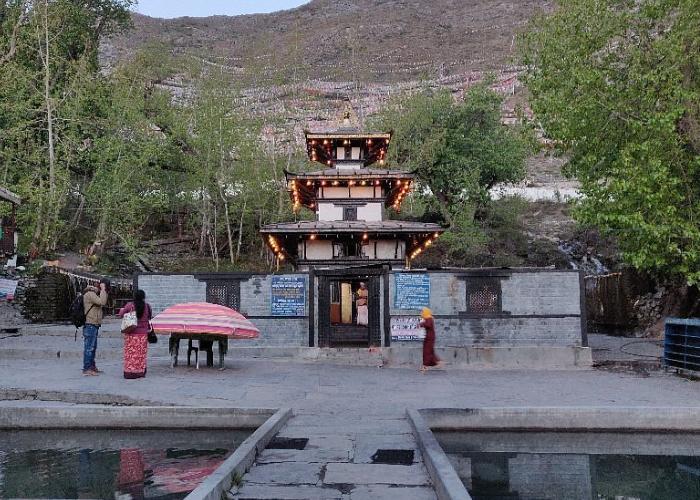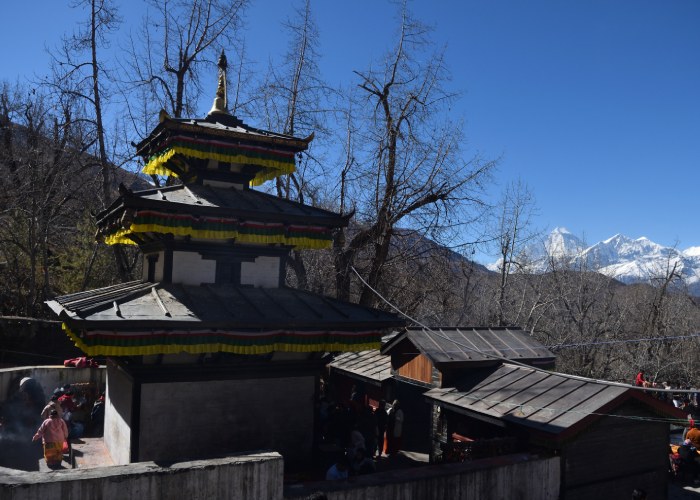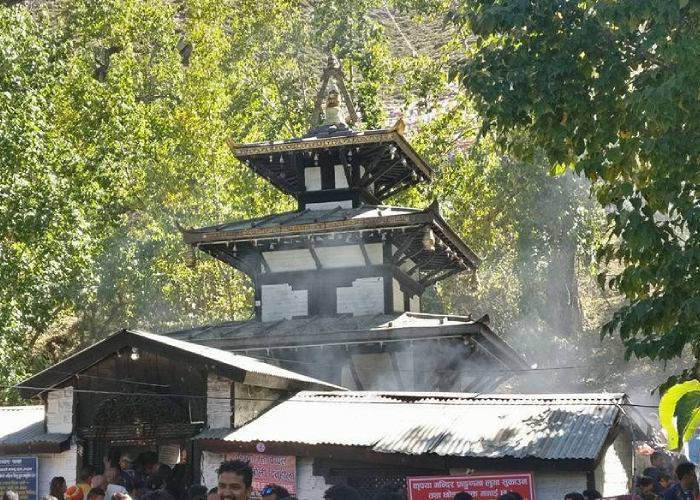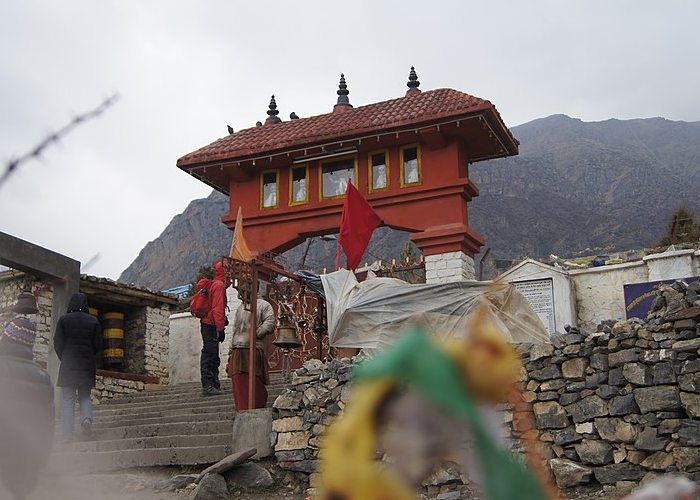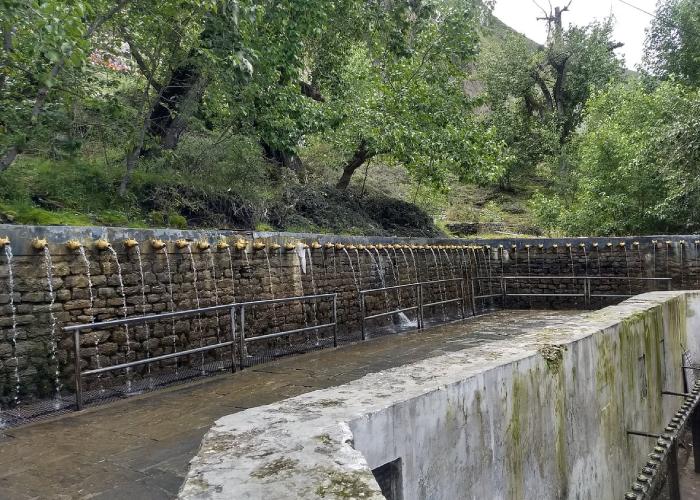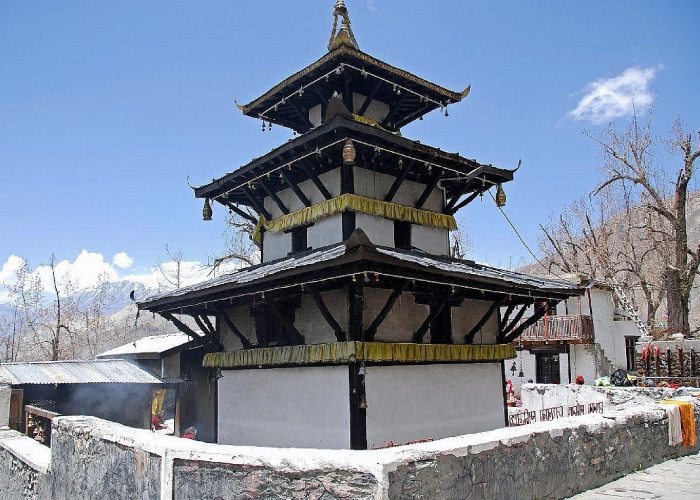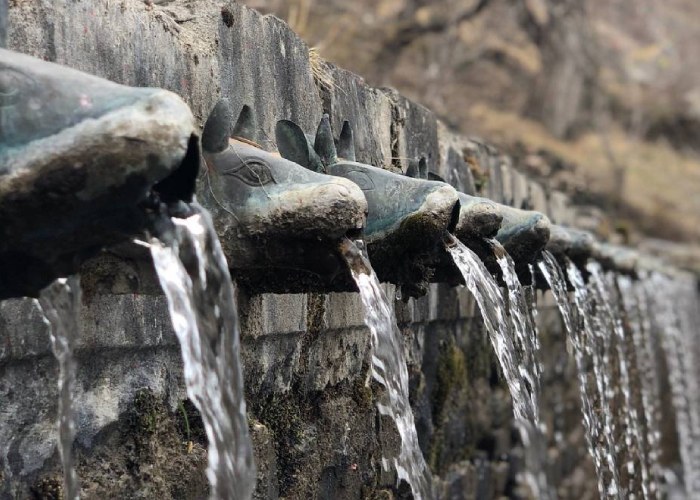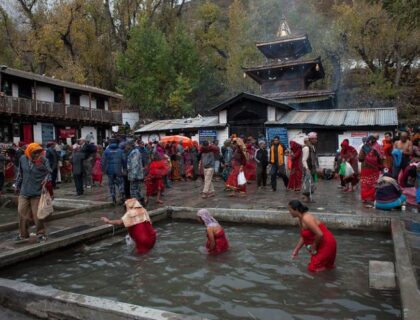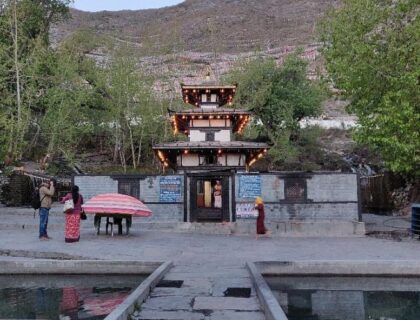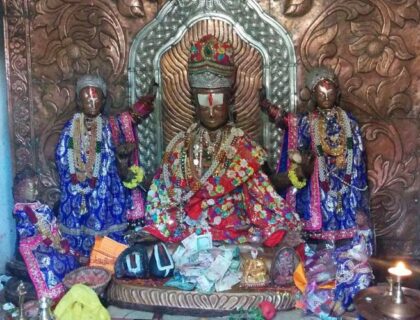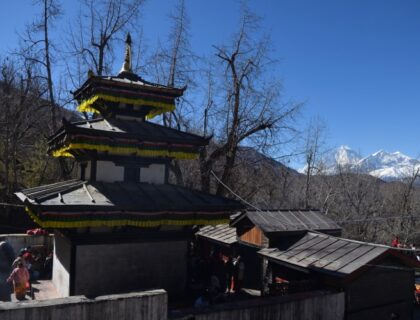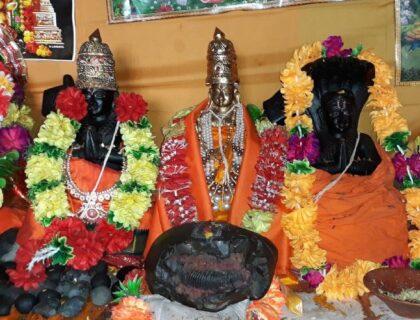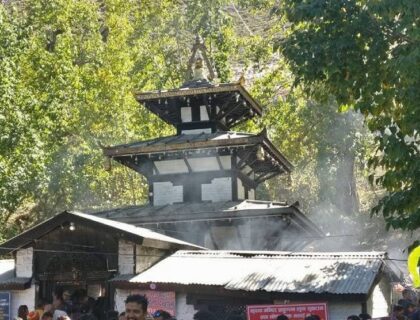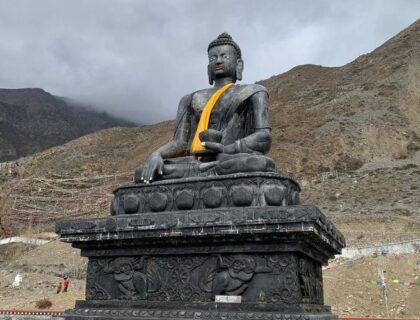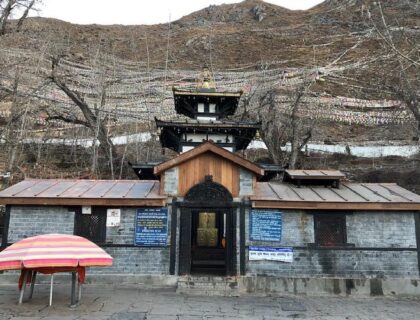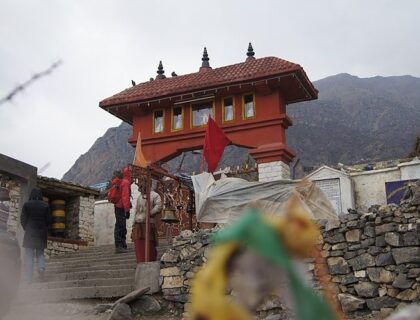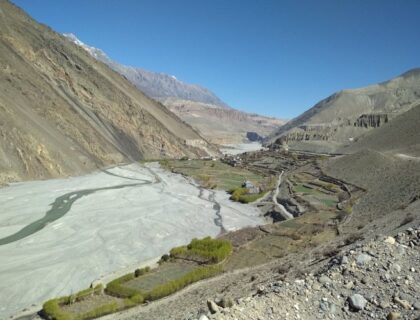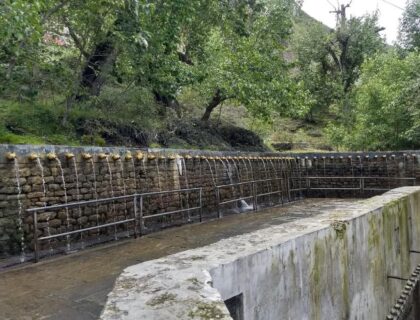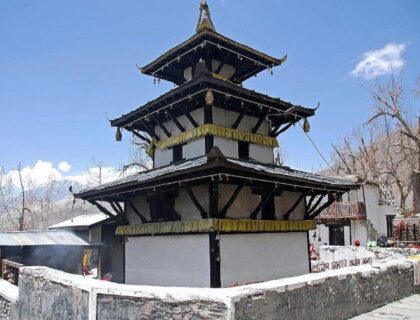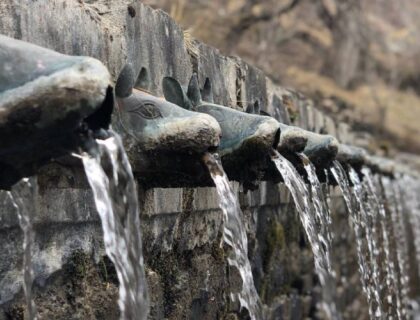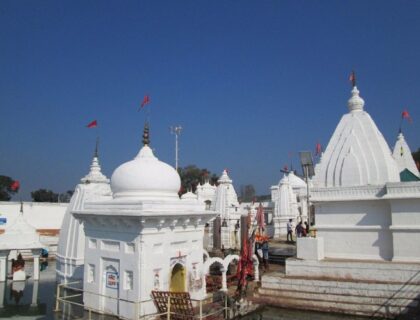Gandaki Shaktipeeth – Muktinath Temple
Gandaki Shaktipeeth or Muktinath Temple is a Vishnu temple, sacred to both Hindus and Buddhists. It is in Mustang, Nepal, in the Muktinath Valley, at the base of the Thorong La mountain pass. It is one of the highest temples in the world at 3,800 meters. It is one of the 108 Divya Desams in Hinduism and the only one outside of India. It is known as Mukti Kshetra, which literally translates to “liberation arena” (moksha), and it is a Char Dham in Nepal.
The Gandaki Shaktipeeth or Muktinath Temple is considered to be a Shaktipeeth and is among 51 Shaktipeeth for a yatra. It is also among one of the 108 Siddhpeeth and is named Mahadevi. Shakti Pithas are sacred abodes of Shakti (primordial cosmic energy), formed by the falling body parts of the corpse of Sati when Shiva carried it as he wandered. Nepal’s Gandaki Shaktipeeth can be found close to the Gandaki River’s banks. Maa Sati’s idol is referred to as “Gandaki” in this culture, and Lord Shiva’s idol is referred to as “Lord Chkrapani.” Because of its relationship to Shakti Peeth, the Gandaki River is Nepal’s most sacred river.
Story Behind Gandaki Shaktipeeth
The goddess of Dakshayani, Sati, Parvati, or Durga, Hinduism’s most important woman and most powerful deity is called Shakti. Durga Devi, Mahakali, and Gowri are the three main manifestations of Shakti, the power goddess. She is Adi Shakti’s avatar.
Sati was the Prajapati Daksha’s daughter, and she married Lord Shiva despite Her father’s wishes. Prajapati Daksha once put together a massive yagya, but he didn’t call his daughter and son-in-law. Sati was very saddened by Her father’s actions. When she got there, her father ignored the Sati and insulted her. She could not bear the insult of his husband (Lord Shiva) and she jumped into the fire of Yagya and committed suicide. She passed away, but her body didn’t burn. Lord Shiva had taken His Virabhadra Rupa out of rage. Daksha’s head was cut off by him, but in the end, He forgave him by bringing him back to life.
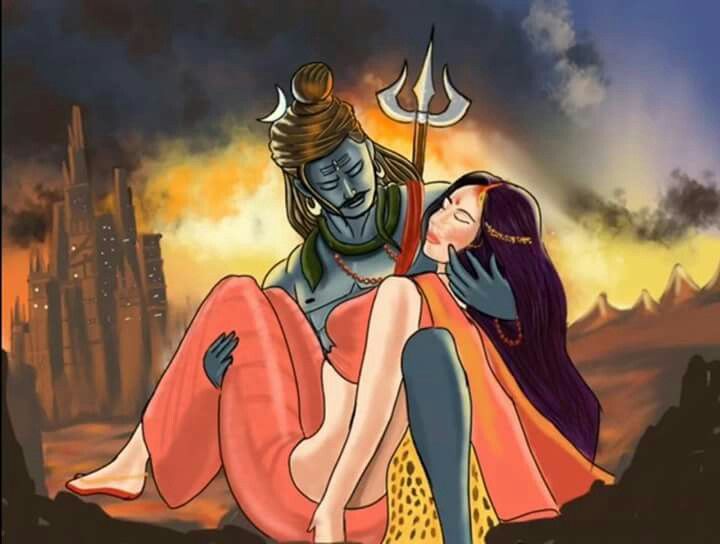
Lord Shiva, devastated, had taken Sati’s body and wandered the universe. Finally, Lord Vishnu used His Chakra to break the Sati’s body into pieces. Each body part transformed into Shakti Pitha. The temple had emerged where the body part had fallen to the ground. In order to safeguard the Shakti Pitha, Lord Shiva created 51 Bhairava for each one.
In Nepal, the Muktinath, or Dawalagiri Peeth, can be found close to the Gandaki River’s bank. Chakrapani serves as the Bhairav for Maa Sati, who resides here in the Gandaki Chandi form. Her forehead had fallen here and hence, the importance of this holy land can also be found in Vishu Purana which is an ancient text of Hinduism.
History of Gandaki Shaktipeeth
It is said that the presence of Shaligrams stones in the depth of the river represents the Maa Sati. There are a couple of places like Muktinath, Damodar Himal, Damodar Kunda, and Devghat that are of spiritual importance right from ancient times. Best information about the origin and the formation of this temple, people can mingle with local people.

People who have a bath in the river Gandaki are said to wash away their sins and attain salvation as the sacred Saligram stones which are used to build lord Vishnu’s temple are present in river Gandaki.
Architecture of Gandaki Shaktipeeth
The central Shrine of Sri Muktinath is regarded by Hindu Vaishnavas as one of the eight most sacred shrines and shares names with the Svayam Vyakta Kshetras. Srirangam, Srimushnam, Tirupati, Naimisharanya, Thothadri, Pushkar, and Badrinath are seven others. The temple is not too big but adorable.
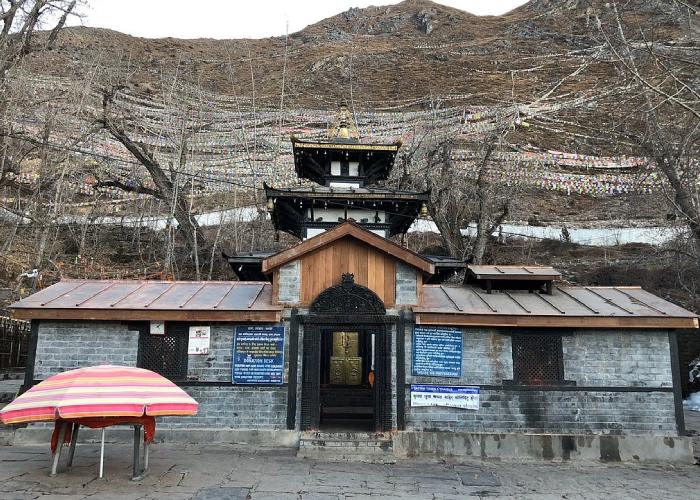
The temple’s unique thing is the 108 bull faces on the outer courtyard of the temple through which water is poured. The holy Pshkarini water that comes from the 108 Sri Vaishnava Divya Desams can be seen flowing through 108 divine water pipes all around the temple complex. Even in subzero temperatures, devotees bathe in the sacred waters here. The tall idol of Lord Vishnu is totally made with gold. We find texts mentioned in Vishnu Puran about the temple.
Facts about Gandaki Shaktipeeth
- Gandaki Shaktipeeth is considered one of the 51 Shakti Peethas famous in Hinduism, known as “Muktadayan” or “Muktinath Temple.”
- This Shaktipeeth is located at the origin of the Gandaki River in Nepal.
- It is said that the presence of Shaligrams stones in the depth of the river represents the Maa Sati.
- The “forehead” of Mata Sati fell in the Gandaki Shakti Peeth. Here Mata Sati is known as ‘Gandaki Chandi’ and Lord Shiva as ‘Chakrapani.’
- There is a profound mythological belief that Lord Vishnu resides in the Shaligrama rock.
- People who have a bath in the river Gandaki are said to wash away their sins and attain salvation as the sacred saligram stones which are used to build lord Vishnu’s temple are present in river Gandaki.
- The whole ambience of this place is like what you say a tourist spot. Nothing can beat a walk along the banks of the river Gandaki.
- According to old legends, Muktikshetra is the place where salvation is attained. So this place is considered a divine place for devotees.
Festivals In Gandaki Shaktipeeth
- Durga Puja. (Winter) – Devotees celebrate Navaratri at this temple in the month of Ashwin (Sep-Oct).
- Navaratri. (Summer) – They celebrate other Navaratri in the fortnight of the Chaitra (March-April). Every nine days they worship Navadurga (nine Durgas).
- Diwali – Diwali is one of the most admired and auspicious festivals in the town.
- Mahashivratri– A grand fair is organized at the Muktinath Temple during the occasion of Maha Shivratri.
How To reach Gandaki Shaktipeeth
Gandaki Shaktipeeth or Muktinath temple is about 125 km from Pokhara, Non-nepali (especially adjacent nation citizens) need to get a visa grant to visit the temple. There are a few special buses plying from India to Nepal
By Air: A dedicated airport is there in Kathmandu (the Capital of Nepal), and provision of both national and international flights is there in this airport.
By Railway: You can plan your visit to this temple by reaching Gorakhpur Railway Station. From Here you can take Govt Buses/ Private Taxis.
By Road: From Pokhara to Jamsom, one can hire local private vehicles (personal vehicles are not allowed) or go through trekking.
Support Us
If our content helps you even 1% in gaining information about the temple, please support us by contributing any amount, our UPI ID is - q417999792@ybl Or pay using QR CODE >>> Click Now
Location
Facilities
- Drinking Water
- Pooja Item Shops
- Prasad Shops
- Resting Room

